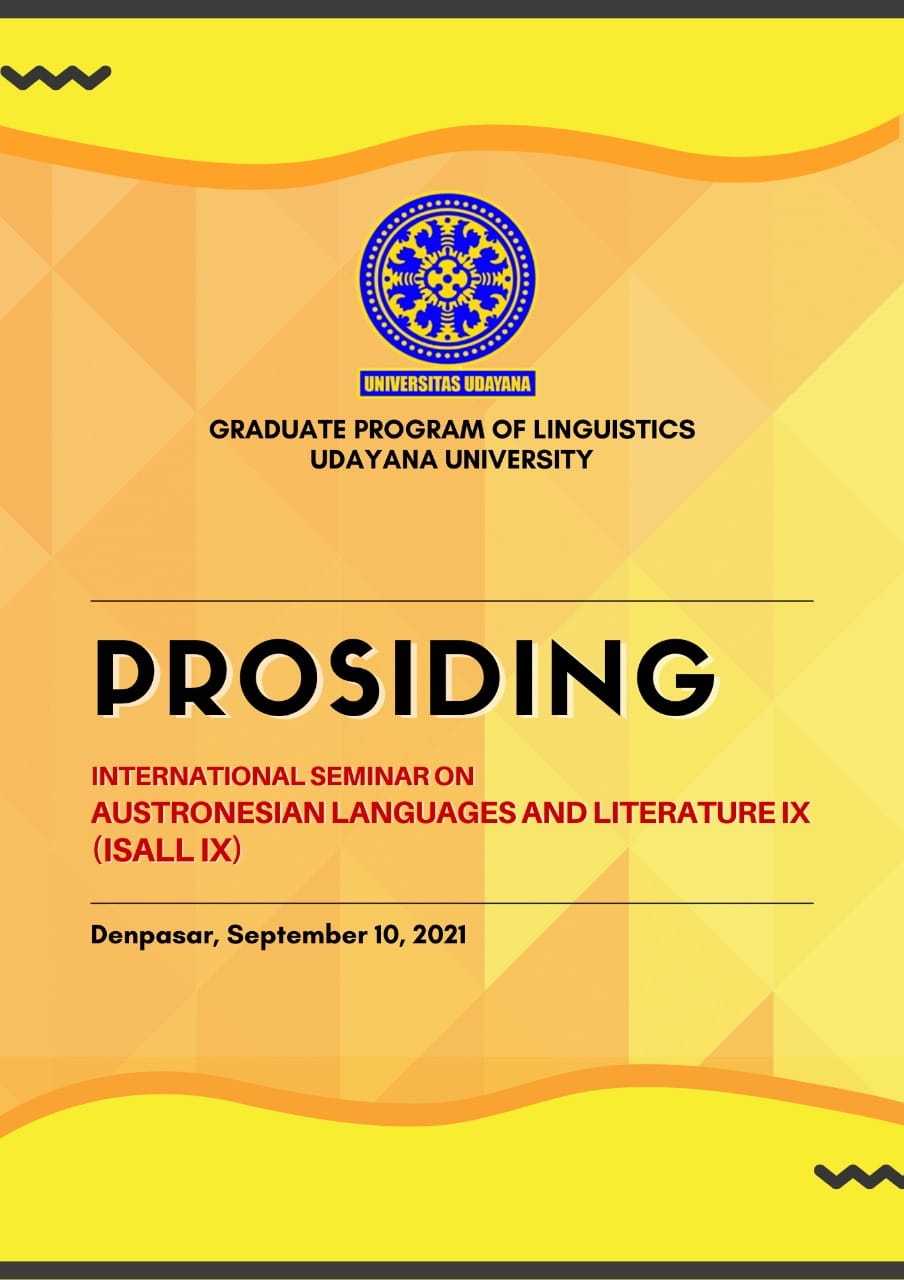Leksikon Biotik dan Abiotik Bahasa Jepang sebagai Metafora Kecantikkan Gadis Jepang
Abstract
Languages ??in every country have many expressions called metaphors. Metaphors can express the culture conditions or perspectives of speakers of a language. Metaphor is one of figurative language to express something by comparing a subject with another subject. This research discusses about metaphors to express the beauty based on Japanese people perspective. The focuses of the problem are: 1) what is kind of lexicon beauty of Japanese girls, 2) what is the meaning of lexicon to express the beauty of Japanese girls. The purpose of this study is to identify the types of Japanese lexicon used in expressing beauty according to the Japanese people's perspective. The data are collected from digital sources. The results showed that there are metaphors that use biotic and abiotic lexicon in Japanese to express the beauty of Japanese girls. The biotic lexicon consists of animals and plants. The type of animal used as a comparison that shows Japanese beauty is karasu 'crow' while the plant used to show beauty in Japanese are shakuyaku (flower), yuri no hana (tulip). Abiotic lexicon to show beauty of Japanese girls uses the lexicon of Mount Fuji and snow. The use of these lexicons is closely related to the geographical of Japan, which is a country of four seasons.
References
Fatimah, Djajasudarma T. 1999. Semantik: Pengantar ke Arah Ilmu Makna. Bandung: PT RefikaAditama.
Jendra, I Wayan. 2007. Sosiolinguistik: Teori dan Penerapannya. Denpasar:
Ikayana.
Lakoff, George dan Mark Johnson. 2003. Metaphor We Live By. London. The University of chikago Press.
Nuzwaty. 2019. Pengenalan Awal Ekolinguistik. Medan. Sastra UISU Press
Rachmawati, Dita. 2019. “Metafora Tangan Dalam Idiom Bahasa Jepang Berdasarkan Teori Metafora Konseptual” Artikel jurnal bahasa, sastra dan budaya Lite Volume 15 Nomor 1, Maret 2019. Udinus
Sudaryanto. 2005. Metode dan Aneka Teknik Analisis Bahasa (Pengantar Penelitian Wahana Kebudayaan Secara Linguistis). Yogyakarta: Duta Wacana University Press.


